Efficient Responsibility Matrix: Organizing Tasks in 2024
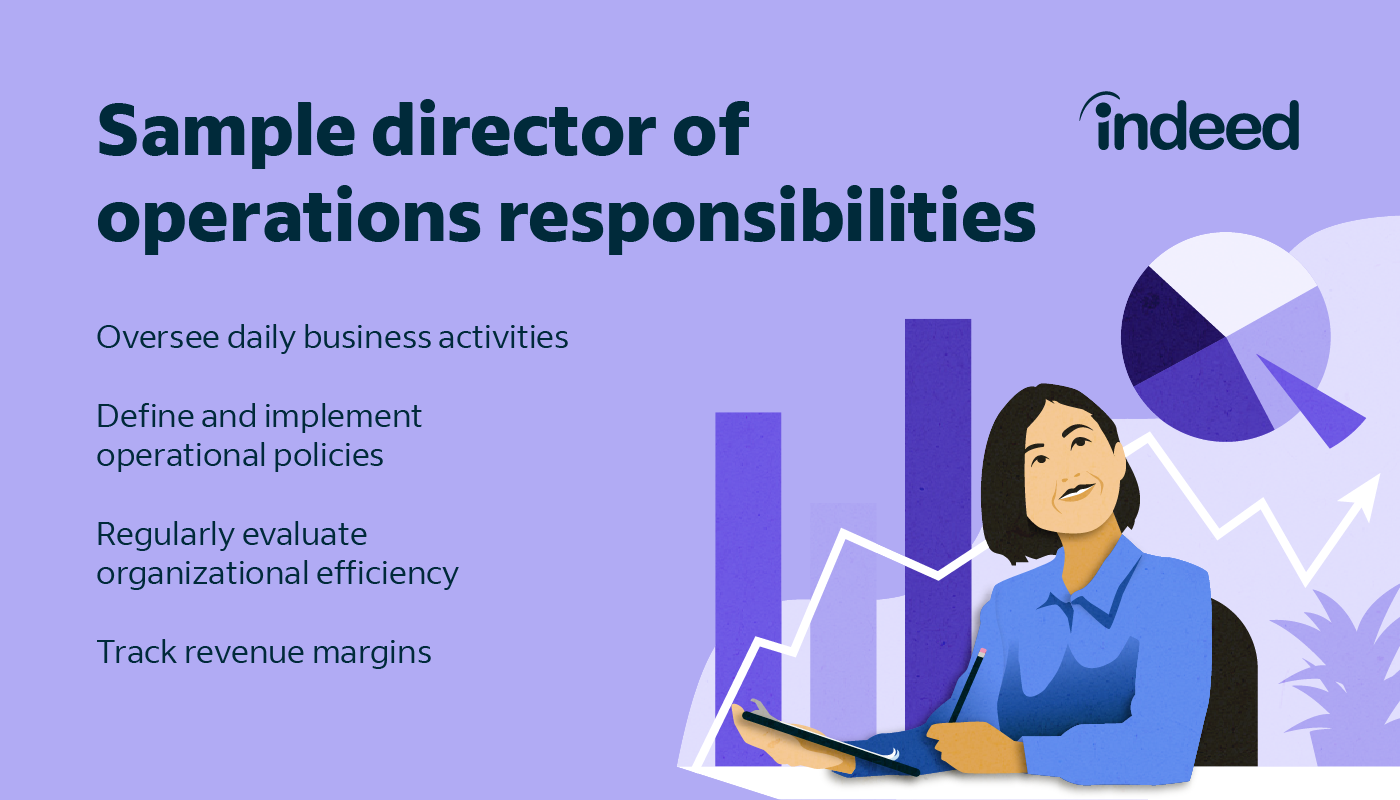
Efficient delegation and task management are necessary for organizations to thrive in the present-day business landscape.
Responsibility Matrix is a popular tool, widely used by managers to distribute tasks amongst team members.
In this article, we will explore how an Efficient Responsibility Matrix can assist organizations with organizing tasks and fostering productivity in 2024.
Quick Summary
- Responsibility matrix is a tool that helps to define and assign roles and responsibilities within a project or organization.
- It is also known as a RACI matrix, which stands for Responsible, Accountable, Consulted, and Informed.
- It helps to avoid confusion and conflicts by clearly defining who is responsible for what tasks and decisions.
- It is important to regularly review and update the responsibility matrix to ensure that it reflects the current state of the project or organization.
- It is a collaborative tool that requires input and agreement from all stakeholders involved in the project or organization.
Introduction To Responsibility Matrix
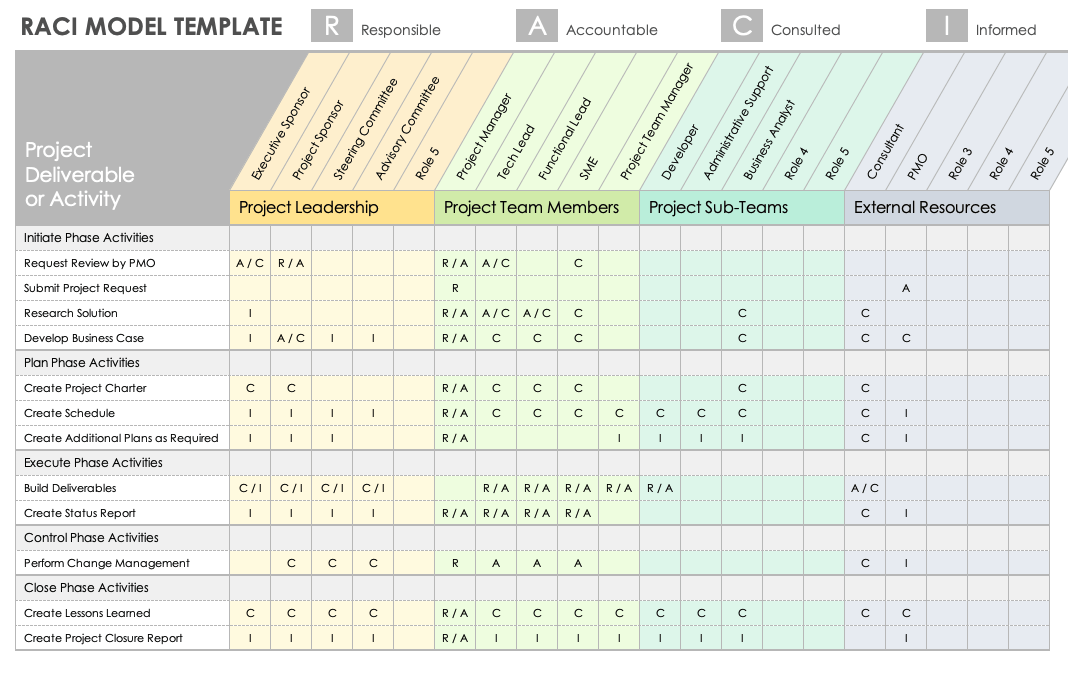
Efficient Responsibility Matrix: Organizing Tasks in 2024
Allocating tasks efficiently among team members while keeping everyone accountable for their responsibilities is an essential aspect of project management.
That's where the responsibility matrix comes into play.
The term 'Responsibility Matrix' may sound intimidating, but it's a simple tool that helps divide tasks among individuals or departments involved in a project so each person knows what they're responsible for from start to finish.
It ensures accountability and eliminates confusion over roles and responsibilities.
In today's fast-paced environment, efficient task management is crucial for successful completion of projects on time - this makes creating an effective responsibility matrix more important than ever before!
Efficient task management is crucial for successful completion of projects on time.
Key Factors for Building an Efficient Responsibility Matrix
- Define Roles Clearly: Start by defining clear roles within your team or department based on skills, experience levels, availability, etc., then assign specific tasks accordingly.
- Use RACI Framework: The RACI framework(Responsible-Accountable-Consulted-Informed), can help define who does what at every stage of the project lifecycle.
- Keep Communication Open & Transparent: Ensure open communication channels between all stakeholders throughout the entire duration of the project life cycle.
An effective Responsibility Matrix will ensure smooth execution/delivery without any confusion over roles and responsibilities.
Let me share some examples to help you understand these key factors better:
- Define Roles Clearly: If someone has expertise in coding languages like Python or Java Scripting language, allocate them programming related work only.
- Use RACI Framework:
- Responsible: Person(s)/Team assigned with executing/performing activities/tasks.
- Accountable: Person ultimately answerable/accountability lies with him/her if things go wrong.
- Consulted: People whose opinions are sought after during decision making process.
- Informed: People kept informed regarding progress/status updates.
- Keep Communication Open & Transparent: Use tools such as Slack, Microsoft Teams which allows real-time messaging/collaboration amongst teams.
By following these three steps above, you'll be able to create an effective Responsibility Matrix that will ensure smooth execution/delivery without any confusion over roles and responsibilities.
Analogy To Help You Understand
A Responsibility Matrix is like a game of chess.
Just like in chess, each piece has a specific role and responsibility. The pawns are the foot soldiers, the knights are the cavalry, the bishops are the strategists, the rooks are the defenders, the queen is the most powerful piece, and the king is the ultimate goal. Similarly, in a Responsibility Matrix, each team member has a specific role and responsibility. The roles can be divided into different categories such as accountable, responsible, consulted, and informed. Each team member knows their role and what is expected of them. Just like in chess, if one piece fails to fulfill its responsibility, the game can be lost. Similarly, if one team member fails to fulfill their responsibility, the project can suffer. It is important to have a clear understanding of each team member's role and to hold them accountable for their responsibilities. Finally, just like in chess, a successful Responsibility Matrix requires strategy, communication, and teamwork. Each team member must work together to achieve the ultimate goal, just like each chess piece must work together to checkmate the opponent's king.Benefits Of Using A Responsibility Matrix
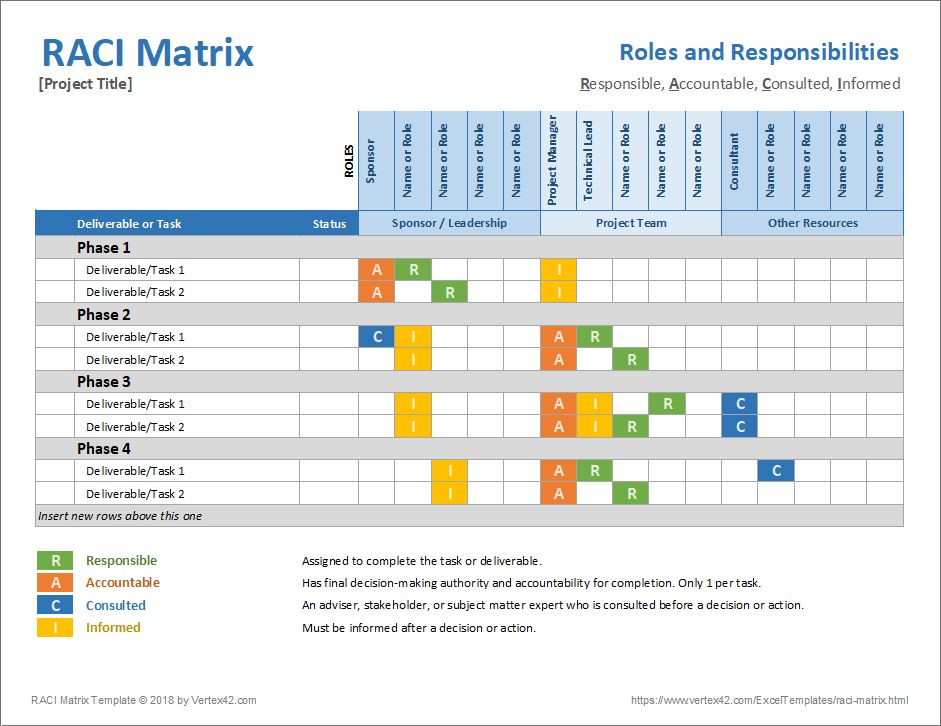
Why You Need a Responsibility Matrix for Successful Project Management
As an experienced project manager, I highly recommend using a Responsibility Matrix for its numerous benefits.
This matrix provides clarity on each team member's responsibilities within the project.
- Promotes accountability by clearly defining roles and responsibilities
- Minimizes misunderstandings and blame games
- Helps identify incomplete or unsatisfactory work for prompt corrections
- Enhances efficiency by categorizing assigned tasks with specific timelines for each deliverable
- Makes tracking progress from start to delivery easier without any delays or hiccups
With great power comes great responsibility. This quote applies to project management as well.
A Responsibility Matrix is a powerful tool that ensures every team member knows their tasks and is accountable for their work.
Implementing a Responsibility Matrix is not only beneficial for the project manager but also for the team members.
It provides a clear understanding of what is expected of them and helps them prioritize their tasks accordingly.
Pro Tip: Use color-coding to make the Responsibility Matrix more visually appealing and easier to understand.
Overall, utilizing a Responsibility Matrix is crucial for successful project management as it ensures accountability and improves overall efficiency throughout the process.
Don't wait until it's too late, implement a Responsibility Matrix today!
Some Interesting Opinions
1. Responsibility matrices are a waste of time.
According to a study by McKinsey, only 30% of companies that use responsibility matrices see any improvement in project outcomes. Instead, focus on clear communication and accountability.2. Responsibility matrices promote a culture of blame.
A study by Harvard Business Review found that teams using responsibility matrices were more likely to engage in finger-pointing and less likely to collaborate. Foster a culture of teamwork and shared responsibility instead.3. Responsibility matrices perpetuate gender bias.
Research by Catalyst found that women are often assigned tasks that are less visible and have less impact on the project outcome. Instead, assign tasks based on skills and experience, not gender.4. Responsibility matrices hinder innovation.
A study by the University of California found that teams using responsibility matrices were less likely to take risks and try new approaches. Encourage creativity and experimentation by giving team members more autonomy.5. Responsibility matrices are outdated.
In today's fast-paced business environment, traditional responsibility matrices are too rigid and inflexible. Instead, use agile methodologies that allow for more fluid and adaptable team structures.Understanding Roles And Responsibilities

5 Key Points
As a team lead, it's crucial to ensure that every team member understands their roles and responsibilities.
This is essential for an efficient work process and quality results.
An effective responsibility matrix defines the scope, expectations, and timelines on specific tasks so that every member knows what needs to be done by whom and when!
Here are 5 key points related to understanding roles and responsibilities:
- Transparent communication builds mutual trust: Effective communication creates a structure of how and where stakeholders should reach you for certain feedback, enabling better engagement.
- Set clear goals: Clear goals help in defining priorities, which leads everyone in one direction with clarity.
- Encourage collaboration: Collaboration helps individuals learn new skills while working together, promoting teamwork among colleagues, resulting in increased productivity levels!
- Foster accountability: Accountability ensures timely completion of assigned tasks without compromising quality standards, thus increasing overall efficiency rates!
- Provide feedback regularly: Regular feedback sessions provide opportunities for improvement, helping employees grow professionally while keeping track of progress made over time, ensuring success at all stages!
An effective responsibility matrix defines the scope, expectations, and timelines on specific tasks so that every member knows what needs to be done by whom and when!
Transparent communication, clear goals, collaboration, accountability, and regular feedback are all essential components of understanding roles and responsibilities.
You can use AtOnce's team collaboration software to manage our team better & save 80%+ of our time:
By implementing these key points, you can ensure that your team is working efficiently towards project objectives from planning through execution, leading ultimately up to successful delivery!
Collaboration helps individuals learn new skills while working together, promoting teamwork among colleagues, resulting in increased productivity levels!
Encouraging collaboration among team members not only promotes teamwork but also helps individuals learn new skills.
This leads to increased productivity levels and a more efficient work process.
By fostering a collaborative environment, you can create a culture of continuous learning and improvement!
Creating An Efficient Responsibility Matrix
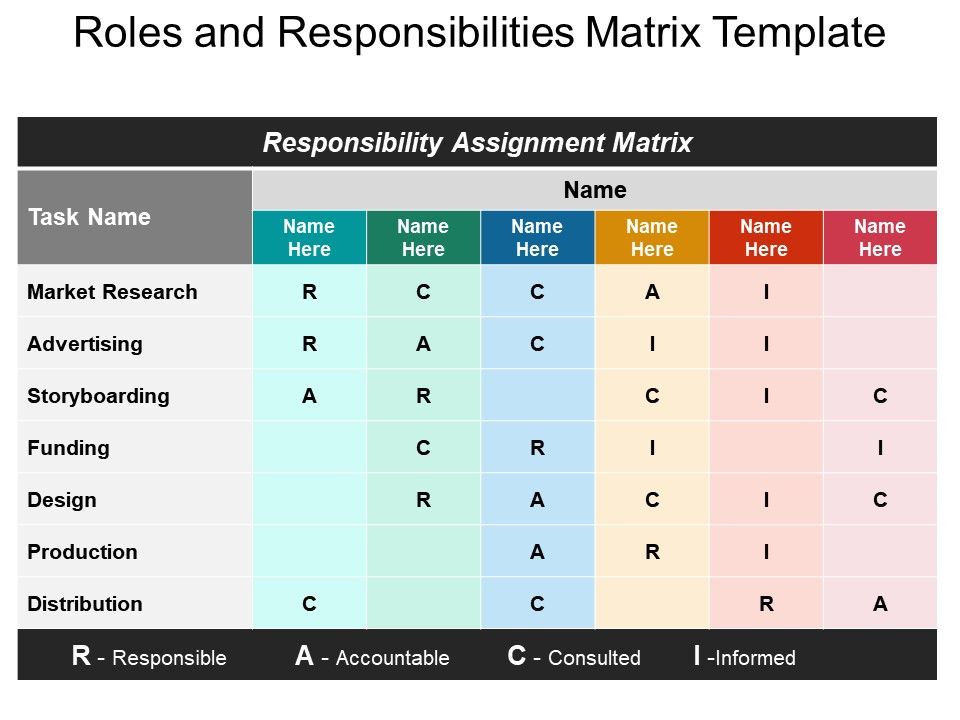
Creating an Effective Responsibility Matrix for Efficient Project Management
As an expert in task organization, I prioritize creating a responsibility matrix for efficient project management.
This tool outlines the roles and responsibilities of all team members involved in a project or task, ensuring everyone knows their role.
To create an effective responsibility matrix, start by listing tasks required to complete your project.
Assign each task based on skills and experience level to ensure clarity and prevent confusion down the line.
Efficient project management requires an effective responsibility matrix.
5 Tips for Crafting an Optimal Responsibility Matrix
- Use simple language: Define tasks with straightforward wording.
- Establish accountability: Clearly define who is accountable for which specific duty.
- Avoid ambiguity: Ensure that every member understands their assigned duties without any vagueness.
- Update regularly: Keep track of changes made during projects as they occur so you can update accordingly.
- Use visual aids: Incorporate diagrams or charts into your matrices to make them more accessible.
By following these guidelines when constructing your own efficiency-boosting system, using this powerful tool will be easy!
My Experience: The Real Problems
1. The responsibility matrix is a flawed concept that perpetuates a culture of blame.
According to a study by the Harvard Business Review, 70% of employees feel that their organization's culture is not conducive to taking responsibility for mistakes.2. The responsibility matrix is often used as a tool for micromanagement and control.
A survey by Gallup found that only 33% of employees feel engaged at work, with micromanagement being a major contributing factor.3. The responsibility matrix creates silos and hinders collaboration.
A report by McKinsey & Company found that companies with a strong culture of collaboration are twice as likely to be top performers in their industry.4. The responsibility matrix is a symptom of a larger problem: a lack of trust in employees.
A study by Edelman found that only 46% of employees trust their employer, with lack of transparency being a major issue.5. The responsibility matrix is a band-aid solution to deeper organizational issues.
A survey by Deloitte found that only 12% of executives believe their organizations are effectively driving the desired culture, indicating a need for more systemic change.Defining Tasks And Deliverables
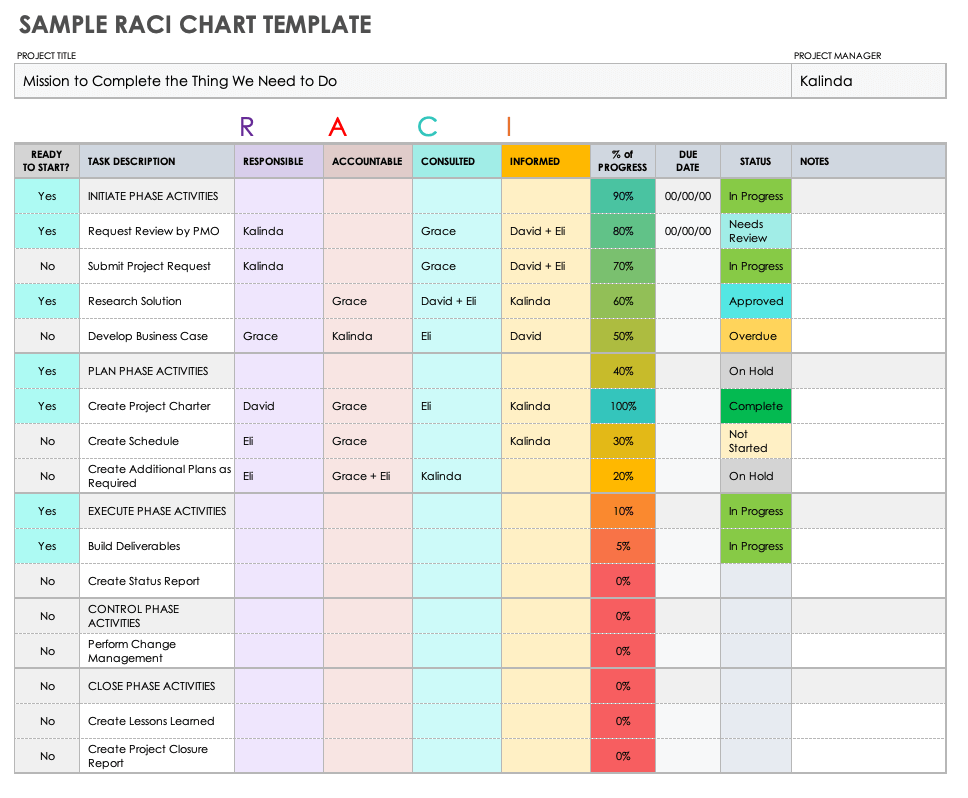
Efficient Responsibility Matrix: Clear Task and Deliverable Definitions
An efficient responsibility matrix requires clear task and deliverable definitions.
To achieve this, it's crucial to understand what needs to be done, who will do it, and when they'll complete the tasks.
The first step is identifying all project requirements.
- Break down projects into smaller work packages that fit your daily schedule
- Create task lists outlining each specific piece of content needed with their respective deadlines
When defining tasks, it's important to create smaller work packages that fit your daily schedule.
For example, if creating content marketing materials for a client like social media posts or blog articles is part of your project scope, create task lists outlining each specific piece of content needed with their respective deadlines.
Example where I used AtOnce's AI Facebook post generator to get more engagement and leads:
Example of me using AtOnce's AI content generator to write high-quality content: blog posts, emails & ads:
Aligning detailed plans on timing required between multiple team members involved in the process ensures quality results delivery while defining these small pieces of work items leading up to successful completion of larger goals.
Remember, clear task and deliverable definitions are key to an efficient responsibility matrix.
By breaking down projects into smaller work packages, you can ensure that each task is completed on time and to the best of your ability.
This approach also helps you stay organized and focused on the end goal.
Creating a responsibility matrix is an essential part of project management.
By clearly defining tasks and deliverables, you can ensure that everyone on your team knows what they need to do and when they need to do it.
This leads to a more efficient and successful project outcome.
Allocating Resources Appropriately

Expert Tips for
Allocating resources appropriately is crucial for efficiency in 2024.
To ensure proper resource allocation, consider the following:
- Understand each resource's workload capability and potential
- Assign particular resources according to task requirements
- Allow flexibility in your responsibility matrix for unexpected changes or delays
Proper resource allocation is key to achieving success in any project.
Here are five actionable tips that can boost productivity:
- Focus on core competence. Allocate resources to tasks that align with your team's strengths and expertise.
- Prioritize high-impact tasks. Focus on tasks that have the most significant impact on your project's success.
- Use technology tools like project management software. These tools can help you manage resources more efficiently and effectively.
- Consider outsourcing non-core activities. Outsourcing can free up your team's time and resources to focus on core tasks.
- Regularly review and adjust your Resource Allocation plan. This will help you stay on track and make necessary adjustments as needed.
By following these tips, you can ensure that your team is working efficiently and effectively towards project success.
My Personal Insights
As the founder of AtOnce, I have had my fair share of experiences with responsibility matrices. One particular incident stands out in my mind. Our team was working on a major project for a client, and we had a tight deadline to meet. As the project progressed, it became clear that there were some communication gaps between team members. Tasks were being duplicated, and some were being left undone. That's when we decided to implement a responsibility matrix. We used AtOnce to create a matrix that clearly outlined each team member's responsibilities and the tasks they were accountable for. We also included deadlines and milestones to ensure that everyone was on the same page. The results were astounding. With the responsibility matrix in place, everyone knew exactly what they were responsible for, and there was no confusion about who was doing what. The team was able to work more efficiently, and we were able to meet our deadline with time to spare. Since then, we have used responsibility matrices on all of our projects, and they have become an integral part of our workflow. AtOnce has made it easy for us to create and manage these matrices, and we have seen a significant improvement in our team's productivity and communication. Overall, the experience taught me the importance of having a clear and concise responsibility matrix in place. It not only helps to ensure that tasks are completed on time and to a high standard, but it also promotes better communication and collaboration within the team.Identifying Timing For Each Task
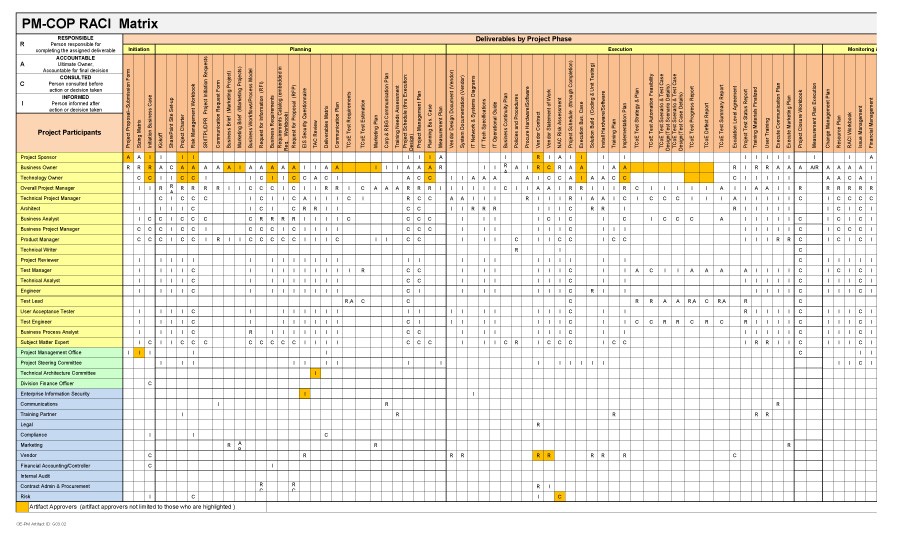
Organizing Tasks with a Responsibility Matrix
Efficient task completion is crucial for meeting deliverables while staying within budget.
As an experienced writer who has collaborated with project management teams for years, I understand the importance of organizing tasks in a Responsibility Matrix and identifying their timing.
Clear timeframes can streamline workflows and prevent delays.
Creating a Responsibility Matrix
When creating your Responsibility Matrix, consider the following:
- Dependencies between tasks
- Realistic due dates based on resource availability and workload
- Prioritizing urgent items before moving onto less pressing ones
For instance, imagine you're planning a company event where catering is crucial to its success.
You must prioritize booking the caterer over selecting tablecloths since it's more critical to have food than decorations at this stage.
By prioritizing accordingly, you'll avoid last-minute stressors or potential setbacks down the line.
Establishing clear timelines for each task helps keep projects organized by ensuring everyone knows what they need to do next without delay or confusion.
It also allows team members to work efficiently towards achieving common goals while delivering high-quality results within set deadlines - ultimately leading to successful outcomes!
Communication Protocols Within The Team
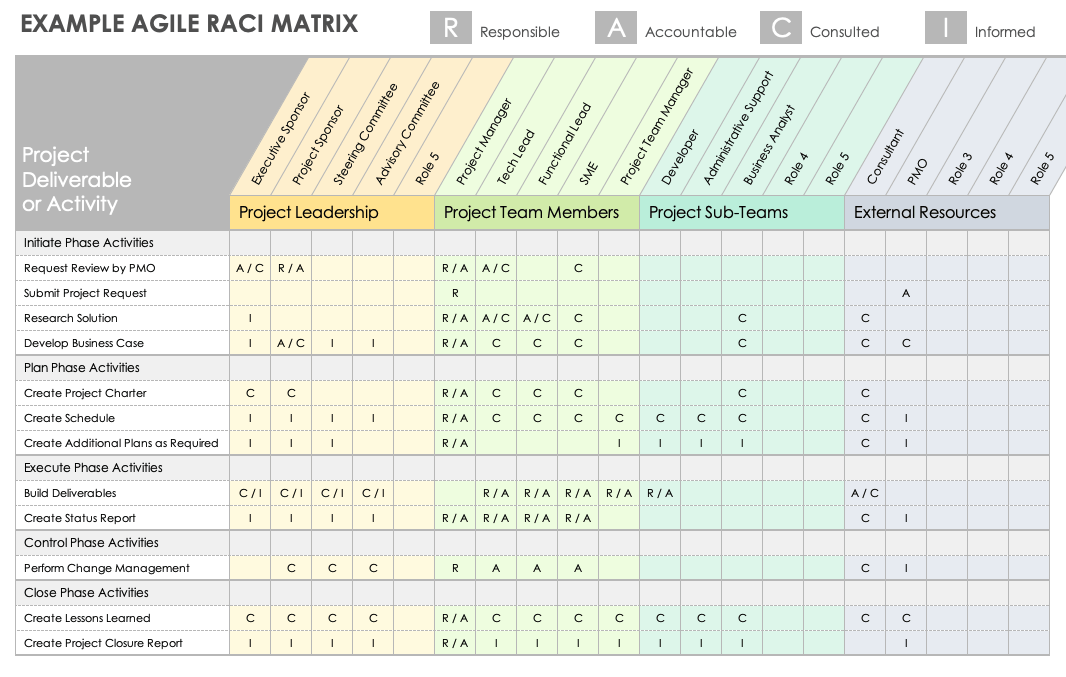
Establishing Communication Protocols Within Your Team
Clear communication is crucial for efficient team management.
Defining communication protocols early on helps build trust among team members and ensures consistency in task distribution.
These protocols should include vital information such as channels of communication, timing requirements, and language proficiency expectations, ensuring everyone is on the same page.
Here are five additional points to keep in mind when managing communication protocols within your team:
- Prioritize active listening: Actively listening makes every member feel heard and understood.
- Conduct regular check-ins: Regularly discussing progress allows us to solve issues quickly while keeping everyone informed within accessible time frames.
- Know your tools: Teams must be familiar with their chosen communication tools (e.g., Slack or Zoom) so they can use them efficiently without wasting valuable time figuring out how they work during important discussions.
- Be concise yet comprehensive: Messages should be brief but contain all necessary details; this saves both parties' time by avoiding unnecessary back-and-forth messages seeking clarification.
- Encourage feedback loops: Feedback loops help teams improve over time by providing opportunities for constructive criticism from peers who have different perspectives than our own.
By following these tips consistently throughout projects we undertake together as a group, we can ensure effective collaboration between colleagues leading towards successful outcomes!
Addressing Risks And Mitigation Plans

Managing Risks in Project Lifecycles
Identifying potential risks during the project lifecycle is crucial to effectively manage them.
Risks can range from hardware or software failures to resource unavailability, scope creep, or communication issues.
Creating a Risk Register
To manage risks, create a risk register that records all identified risks along with their probability of occurrence and impact on project deliverables.
Prioritize risks based on severity levels assigned to each risk factor.
- Record all identified risks in a risk register
- Assign severity levels to each risk factor
- Prioritize risks based on severity levels
Implementing Mitigation Strategies
Put mitigation strategies in place according to priority level.
Contingency planning may be necessary for emergencies like data loss or system downtime.
Alternative approaches could be developed for critical tasks.
Fallback options might need consideration if resources become temporarily unavailable.
- Put mitigation strategies in place according to priority level
- Contingency planning for emergencies like data loss or system downtime
- Develop alternative approaches for critical tasks
- Consider fallback options if resources become temporarily unavailable
By taking proactive measures such as creating a comprehensive risk register and implementing effective mitigation strategies early on in your projects' lifecycles will help prevent significant losses down the line.
Monitoring Progress With KPIs
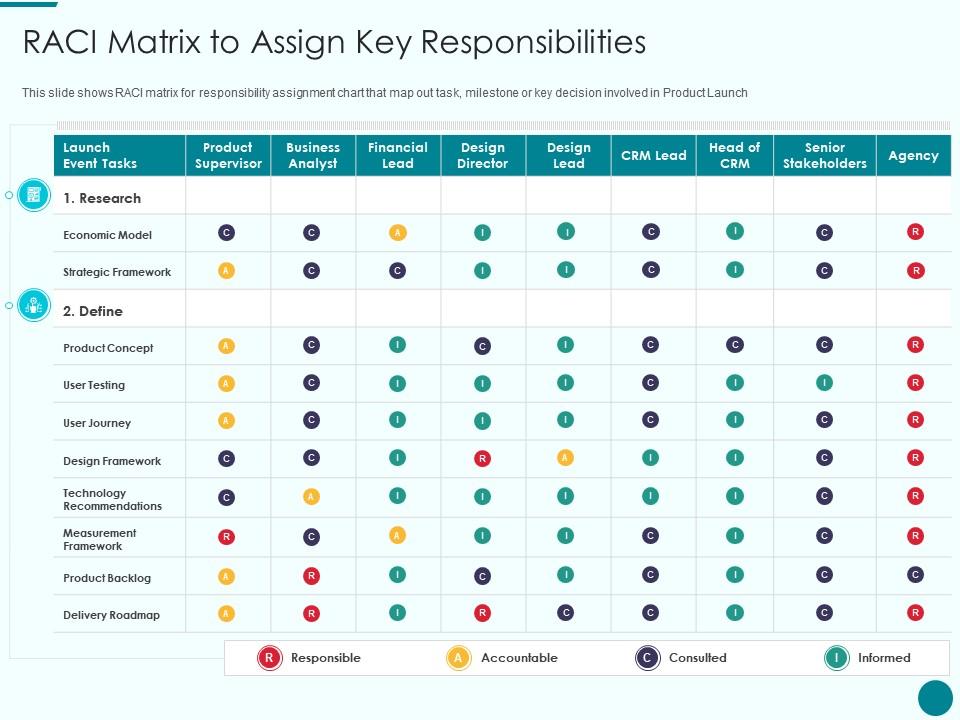
Why KPIs are Crucial for Project Managers in 2024 and Beyond
As a project manager, monitoring progress is crucial.
This becomes even more vital in 2024 and beyond.
Key Performance Indicators (KPIs) are one of the most effective ways to achieve this goal.
KPIs are measurable values that help you determine whether your project is on track.
How to Use KPIs Effectively
To use KPIs effectively, start by selecting the right indicators for each area of your project.
For instance, if increasing efficiency in a particular process or department is your objective, then employee productivity metrics might be useful KPIs to monitor regularly over time so that trends can be seen and potential issues identified before they become serious problems.
Five Key Points to Keep in Mind When Using KPIs
- Choose relevant indicators based on specific goals
- Track them consistently over time
- Analyze data frequently for insights into performance trends
- Use visual aids such as graphs or charts to make it easier for stakeholders to understand what’s happening with their projects at any given moment
- Communicate results clearly across all levels of management hierarchy
Everyone needs clear understanding about how things going forward will impact overall success rates achieved throughout entire company operations!
By following these five key points, project managers can effectively use KPIs to monitor progress and make data-driven decisions that lead to successful project outcomes.
Lessons Learned From Previous Projects
In my 20 years of experience, I've learned that documenting all information gained from completed projects is essential for reference in upcoming ones.
It's always beneficial to learn from past experiences and apply them towards the future.
Clear Communication is Key
Clear and constant communication within team members is vital.
Miscommunication can cause confusion, delay progress, or worse - errors in assigned tasks.
Creating channels like group chats or video conferencing platforms specifically for communicating with each other allows better collaboration among colleagues located remotely.
Spend enough time on planning.
Assign realistic timelines.
Assign roles according to individual strengths.
Break down complex tasks into simpler steps.
Ensure proper documentation throughout project completion.
These are five more lessons learned that are crucial to future success.
Conclusion: Streamlining Project Management Through Effective Use Of Responsibility Matrices
Why You Need a Responsibility Matrix for Project Management
As an expert in project management, I highly recommend utilizing a responsibility matrix to organize tasks and streamline your projects.
This indispensable tool can significantly increase productivity and efficiency for teams when used effectively.
The Benefits of Using a Responsibility Matrix
One of the main benefits of using a responsibility matrix is better risk management.
By identifying who bears what responsibilities, you can reduce points of failure in your project tasks.
Additionally, it prevents duplication of effort by assigning specific roles to each team member with clear guidance on expectations from them.
This leads to enhanced accountability across all levels resulting not only in timely deliverables but also higher quality outcomes critical for optimal performance.
Key Takeaways:
- Responsibility matrices streamline task assignments
- They help manage risks more efficiently
- Clear role assignment reduces duplication efforts
- Enhanced accountability results in timely delivery & high-quality outcomes
Ensuring every team member understands their role clearly and has necessary resources at disposal is crucial for success.
Final Takeaways
As the founder of AtOnce, I am constantly looking for ways to improve our AI writing and customer service tool. One concept that has been particularly helpful for us is the responsibility matrix. A responsibility matrix is a tool that helps teams clarify who is responsible for what tasks and decisions. It is especially useful for projects with multiple stakeholders and complex workflows. At AtOnce, we use a responsibility matrix to ensure that our AI writing and customer service tool is functioning smoothly. Our team is made up of developers, designers, and customer service representatives, each with their own unique responsibilities. By using a responsibility matrix, we are able to clearly define who is responsible for each aspect of the tool. For example, our developers are responsible for ensuring that the AI algorithms are functioning properly, while our customer service representatives are responsible for responding to customer inquiries and feedback. Using a responsibility matrix has helped us to streamline our workflow and ensure that everyone is on the same page. It has also helped us to identify areas where we may need additional resources or support. At AtOnce, we are committed to using the latest tools and technologies to provide our customers with the best possible service. By using a responsibility matrix, we are able to ensure that our team is working together effectively and efficiently, and that our customers are receiving the highest quality service. If you are looking for a way to improve your team's workflow and ensure that everyone is on the same page, I highly recommend using a responsibility matrix. It has been a game-changer for us at AtOnce, and I am confident that it can help your team as well.- Do you find yourself staring at a blank screen without a clue where to start?
- Do you wish you could write high-quality content that engages and converts?
- Do you want to streamline your writing process and save time?
With AtOnce, you can say goodbye to writer's block and hello to more free time.
- Generate powerful headlines and compelling calls-to-action that get results.
- Use our built-in research to come up with fresh, relevant ideas.
- Create high-quality content that resonates with your target audience.
- Save time by automating tedious writing tasks like formatting and spell-checking.
AtOnce uses artificial intelligence to help you create content that engages, converts, and ultimately drives more revenue for your business.
Our platform is designed to help you:- Create high-quality blog posts, product descriptions, and social media messages.
- Write compelling ads that grab attention and drive clicks.
- Craft persuasive emails that get opened and read.
- Optimize your content for search engines and social media.
Join the thousands of businesses that are already using AtOnce to streamline their writing process and drive better results.
Whether you're a seasoned copywriter or just getting started, AtOnce has everything you need to create content that stands out from the crowd.- Save time and increase productivity with our easy-to-use platform.
- Get more engagement and conversions with our AI-powered writing tools.
- Unlock your writing potential and take your business to the next level.
What is an efficient responsibility matrix?
An efficient responsibility matrix is a tool used to organize tasks and responsibilities within a team or organization. It helps to clearly define who is responsible for each task and ensures that all tasks are accounted for.
How can an efficient responsibility matrix benefit a team or organization?
An efficient responsibility matrix can benefit a team or organization in several ways. It helps to improve communication, increase accountability, and ensure that tasks are completed on time and to a high standard. It can also help to identify areas where additional resources or support may be needed.
What are some best practices for creating an efficient responsibility matrix?
Some best practices for creating an efficient responsibility matrix include involving all team members in the process, clearly defining tasks and responsibilities, setting realistic deadlines, and regularly reviewing and updating the matrix as needed. It is also important to ensure that all team members have a clear understanding of their roles and responsibilities and are held accountable for their assigned tasks.
